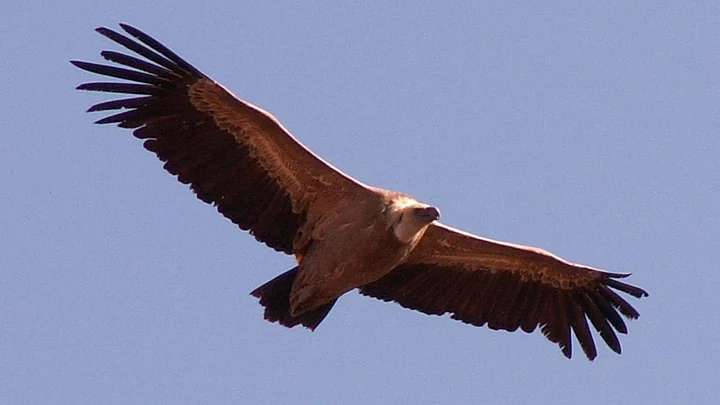The leopards are slipping into human colonies. The stray dog population is soaring by seven million. Vultures, the most efficient scavengers on this planet and a vital link to the ecosystem, have disappeared by 90% in India.
What is behind this ecological catastrophe?
Where Did All the Vultures Go?
When was the last time you saw a vulture? Remember in the ‘90s, it was hard to look up in the sky and not spot a vulture. Till as early as the late 1980s, there were roughly 80 million vultures in India, of nine different types. Now there are only 60,000 of these majestic birds left, with three types almost at the brink of extinction. All because of one chemical intrusion by man.
Diclofenac, a cheap, anti-inflammatory drug which saves lame, old cattle from pain and fever, silently killed millions of vultures when they feed on the dead carcass. Studies show even if the carcass has less than 1% of diclofenac, it’s enough to kill the vulture.
The absence of scavenging vultures has put the ecosystem dangerously out of balance. The population of dogs, rats and crows are exploding. Stray dogs feeding on dead animals are becoming more ferocious.
India has the highest rabies cases in the world. 36% of all rabies cases in the world occur in India. With 20,000 rabies deaths a year, there is a serious battle at hand.
The decline of vultures also threatens the 3000 year old traditional sky-burial among the Parsi community. Parsis, who practice Zoroastrianism, do not cremate the dead and instead practice sky-burial where they leave the bodies under the sky for the vultures to excarnate.
Earlier vultures devoured the body within an hour, but now kites, crows and dogs are attacking these bodies and it hurts the Parsi sentiment. Without the vultures the traditional sky-burial is becoming difficult.
Bringing the Vultures Back From the Abyss
The disappearance of the vultures in India is the fastest decline of any species in the world. Even faster than the waning of the dodo - the national bird of Mauritius. But the Indian government was quick to act by banning diclofenac after it was found to be the culprit in 2006.
The diclofenac ban is a step in the right direction. But it is not enough.
The government needs to give a push to the Vulture Conservation Programme given the number of vultures is so low that it requires scientific intervention to save it back from the abyss.
Right now, three centres have been set up in Pinjor (Haryana), Baxa (West Bengal) and Rani (Assam) to breed these birds in captivation.
The problem is that vultures are very slow breeders. They don’t breed till they are five years old and lay only one egg a year. Vulture conservation is anything but a walk in the park. These efforts have been fruitful. The captive vulture population has risen to 230 birds in five years.
Four more centres in Gujarat, Madhya Pradesh, Orissa and Andhra Pradesh are also being set up.
While the breeding efforts are on, the complete success will only be possible if we eradicate diclofenac completely. The DGCI and the Animal Husbandry Department have to ensure the nationwide ban, to give the remaining 1% of vultures a fighting chance for survival.
The problem is fixable but it is far from over. The fate of a species depends on us.
(At The Quint, we question everything. Play an active role in shaping our journalism by becoming a member today.)
